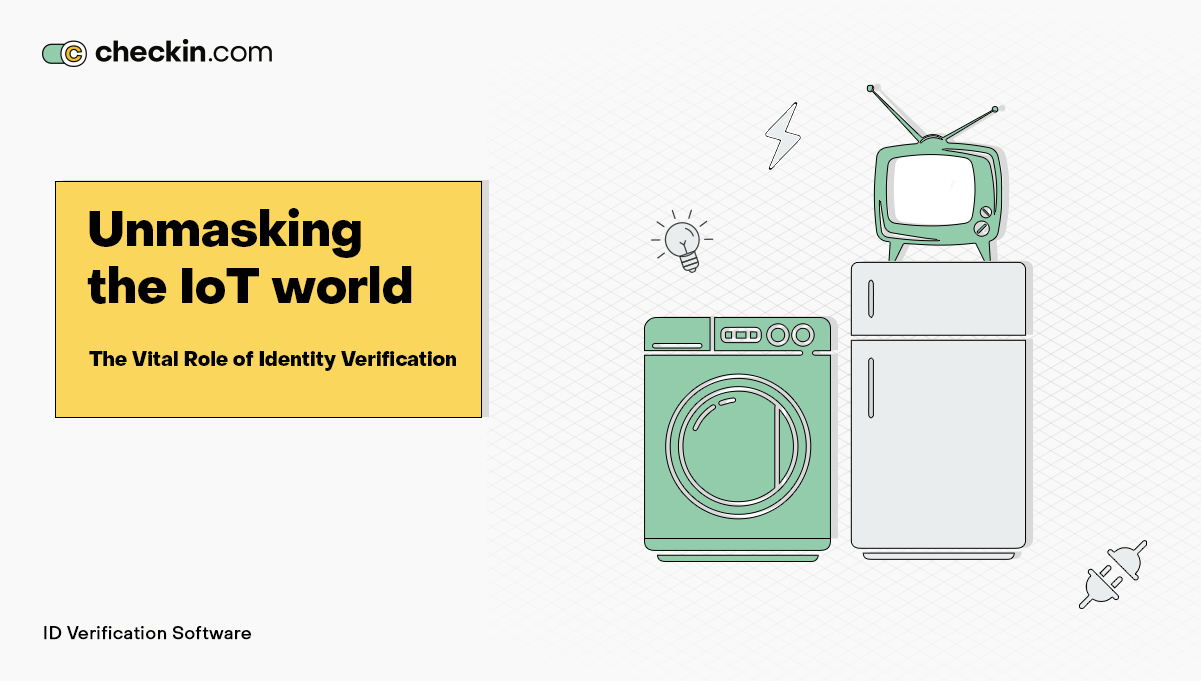
Strengthening IoT Trust: Embracing Identity Verification
13 Jan 2023
Welcome to the future where your refrigerator can suggest dinner recipes, your car navigates on its own, and your home is smart enough to control its energy use. Let’s dive into how service providers are weaving the fabric of trust through identity verification for IoT devices.
Untangling Identity Verification in the IoT Sphere
When you think about id verification service, it’s easy to picture it in a human context – checking passports or driving licenses, for instance. But in the IoT realm, it’s about authenticating the myriad of smart devices connecting to networks, accessing data, and interacting with us on a daily basis.
From refrigerators to cars, and even to industrial machines, these IoT devices, if left unprotected, could become open gates to cyberattacks, posing threats to our privacy, security, and safety. And that’s precisely where identity verification steps in, serving as a shield against these potential vulnerabilities.
New-age Solutions for Identity Verification in IoT
The identity verification landscape in IoT is brimming with innovation. Check out a few breakthrough solutions that service providers are bringing to the table:
- Digital Certificates: These are akin to an IoT device’s ID card, issued by a trusted entity, that proves the device’s legitimacy.
- Blockchain Technology: The power of blockchain provides an unchangeable log of a device’s identity and activities, making it a tough nut to crack for any cyber attacker.
- Device Fingerprinting: Unique elements, such as MAC addresses, serial numbers, or distinct energy consumption patterns, form a distinctive ‘fingerprint’ for each device that can be used to validate its identity.
The Impact: IoT Security Bolstered by Identity Verification
Robust identity verification solutions pave the way for a safer IoT ecosystem:
- Blocking Unwanted Guests: By verifying each device, only legitimate devices gain network access, shrinking the chances of security breaches.
- Maintaining Data Purity: Trustworthy data transmission becomes a reality with verified devices, enhancing the overall data integrity in the IoT landscape.
- Boosting User Trust: When users are confident about their devices’ security, they are more likely to enjoy the benefits of IoT technology without fretting over safety or privacy concerns.
Identity Verification and IoT
As we advance further into a world dominated by IoT, the role of effective identity verification will continue to magnify. It is the lighthouse guiding us towards a more connected world that’s safe, secure, and trustworthy.
The current innovations in IoT identity verification are just the tip of the iceberg. As technology zooms ahead, we’re likely to see an array of more refined and resilient solutions, creating an increasingly reliable IoT ecosystem.
Why Identity Verification Matters in IoT
To fully appreciate the need for identity verification in IoT, it’s crucial to understand the risks at play. Each IoT device connects to a network, making it a potential entry point for cybercriminals. A compromised device can lead to data leaks, privacy invasions, and malicious attacks. In the worst-case scenario, a hacked IoT device can be used to perpetrate physical harm.
Imagine a smart home system that controls your locks, lighting, and heating. A breach could give criminals access to your home or allow them to manipulate your environment. In the case of IoT vehicles, the stakes are even higher – an attacker could potentially control a vehicle remotely, leading to catastrophic consequences.
These aren’t just hypothetical risks; incidents of IoT devices being exploited are increasingly common, underscoring the urgency of identity verification. By ensuring that each device connected to a network is trustworthy, identity verification can significantly reduce these risks and contribute to a safer IoT ecosystem.
The Role of Service Providers in IoT Identity Verification
Service providers have a critical role in implementing identity verification for IoT devices. They’re responsible for creating and deploying the solutions that can authenticate each device in an IoT network. This involves developing sophisticated technologies and staying one step ahead of potential threats.
Moreover, service providers need to ensure that their identity verification solutions are user-friendly. For consumers to adopt these safety measures, they need to be easy to understand and use. The best identity verification solution is one that seamlessly integrates with users’ routines, providing robust security without causing inconvenience.
The Importance of Continuous Innovation in IoT Identity Verification
The world of IoT is dynamic, with new types of devices and potential threats emerging regularly. Therefore, IoT identity verification cannot be a one-time solution – it needs continuous innovation. As new vulnerabilities are discovered, new verification techniques must be developed.
In this sense, the field of IoT identity verification is not just about technology; it’s about adaptability. It involves staying abreast of the latest developments in the IoT world and adjusting strategies accordingly. This adaptability is what will keep our IoT networks secure as we move further into the interconnected future.
Conclusion
In the sprawling IoT landscape, identity verification emerges as the unsung hero, safeguarding our devices and data.
As we embrace smarter homes, autonomous vehicles, and interconnected devices, knowing that they’re authenticated gives us the confidence to enjoy IoT’s conveniences without fretting about our security. The future of IoT isn’t just about connection – it’s about protected, verified connection.
FAQ
Why is identity verification important in IoT?
Identity verification ensures that only authorized IoT devices can access networks and data, thereby protecting against unauthorized access and ensuring data integrity.
What are some innovative identity verification solutions in IoT?
Cutting-edge solutions include digital certificates, blockchain technology, and device fingerprinting, all designed to confirm a device’s identity.
How does identity verification enhance IoT security?
It prevents unauthorized access, improves data integrity, and boosts user confidence in their devices’ security.